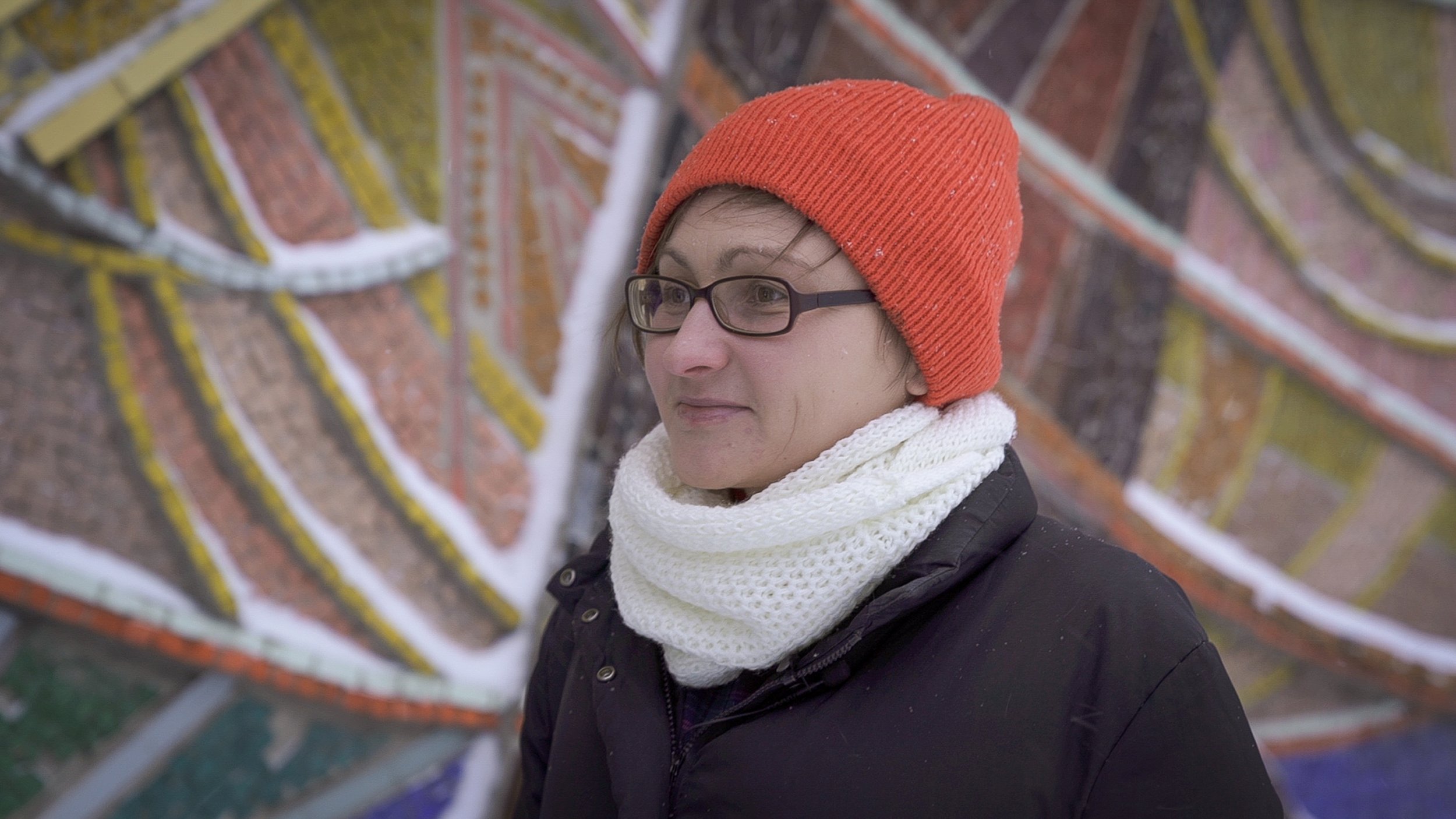Featured People
Armen Sardarov -
Belarus
Armen was the first in the USSR to defend a thesis on road architecture and has since published several books on the topic. For 30 years he was the chief road architect of Belarus and designed up to 100 bus stops himself. Currently he is the Dean of the Architecture Department at the Belarussian National Technical University.
“I am proud of it, because it was an opportunity.”
“ A road, from a philosophical point of view, reminds me of music because like music exists in time, the road exists in time and space as well. That is why not only big objects and loud sounds are important. But also small ones, pauses, breaks.“
Anna Bronovitskaya - Russia
Architectural historian and author, Professor at the Moscow Architecture School (MARCH), Head of Research at the Institute of Modernism.
“The initial idea of the 60s, talking about the modernist period, post-Stalanist period, was to build everything cheap and easy and quick, with standard designs.”
“Of course, the farther from the centre, the less it was controlled. It’s a huge territory, you know. You can’t control everything from one point.”
“They were never published, you know, as an expression of peoples art. So it was just ignored.“
Enu Mäela and Jüri Konsap - Estonia
During the 1970’s in the small Estonian town of Niitsiku, Enu (left) and Jüri (right) worked at the local furniture factory and were tasked with creating a bus stop affectionately named the Spider for the workers.
“The bus stop was the result of the new road. We didn’t wait for orders from anywhere. It was created for the local people. Nobody saw it as a Soviet thing. It was ours.” - Enu
“ Horseflies... Yes. We had the same ones. With two wings and so on, only skinnier, probably because of hunger. There was a lot less food in the shops. So to survive you needed to work much harder.” - Juri
Zhenia Moliar - Ukraine
Zhenia studied at the National Academy of Fine Arts and Architecture in Kyiv and specializes now on the cultural heritage of the Soviet period, in particular monumental art. She curated the project SOVIET MOSAICS IN UKRAINE and works with DE NE DE, which is an artistic initiative that unites participants to study and preserve uncomfortable heritage in the context of ideological shifts.
“The Soviet Period was an absolute cruel moment but on the other hand the Soviet period was a huge part of the history of our country and a huge part of the history of our life and we try to show in this period some positive moments. For example, some progressive points of culture, some progressive points of art.“
Konstantinas Jakovlevas-Mateckis -
Lithuanian
From 1968 to 1986 Konstantinas was the Head of the Environmental Architecture section of the Institute of Technical Aesthetics in Vilnius Lithuania (now the Institute of Design), where bus stop design was part of his work. He later went on to be the Professor and Dean of the Faculty of Architecture at Vilnius Gediminas Technical University.
“Speaking about the minor architecture there weren’t any regulations or rules, everything was based on the architects‘ knowledge and ideas, which were implemented.”
“The uniqueness of a bus stop was also based on regional differences between different republics. Belarus had its own solutions, we Lithuanians had others and some Caucasian republics were also different.“
Nana Zaalishvili - Georgia
Nana is a Georgian architect and furniture designer and founder of Idaaf Architects. She has also dedicated years to “hunting” down and photographing Soviet era bus stops in native Georgia and has published the book Soviet Bus Stops in Georgia. Her conservation work has successfully led to some of the bus stops being listed as cultural monuments.
“Everywhere, in every part of the world you go and everything looks the same. And it's not characterized. So these bus stops when you travel , even though they are totally abandoned out of nowhere gives you some sort of feeling of shapes, material, what it was before and that’s part of history, whether you like it or not it exists and humans created it. That’s why for me as a young architect I find a lot of inspiration in it.”
Viktor Sheptunov Illarionovich - Russia
For more than 35 years the exhibition hall for Viktor Illarionovich was the whole city, designing and decorating public spaces in Khvalynsk, Russia. He worked with concrete, wood, and metal.
“My inner desire told me I had to work on the aesthetics of the bus stops. Because it’s a living organism, many people come there, they meet there, talk, and then go their own way.”
Zurab Tsereteli - Georgia
Georgian artist who in the late 60s worked on several bus stops along the Black Sea coast. He was famous for his use of colorful mosaic tiles, and went on to a prolific career as painter and sculptor and creator of large scale monuments around the world. Currently, Tsereteli is the President of the Russian Academy of Arts.
“Well, I cannot answer why there is no roof. Why this, why what? It's their problem. But I as an artist, do everything artistically.”
Nini Palavandishvili - Georgia
Freelance curator, researcher and author. The focus of her research lies on mid 20th-century modernist architecture, monumental and decorative art, their role in a time of creation, and current interpretations. The works of George Chakhava are included in her research.
“Chakhava was Deputy Minister of the Ministry of Automobile Roads. In this case he was basically Commissioner and commissioned in one person. So I guess it gave him as a Deputy minister, as a chief architect, it gave him a lot of freedom to design what he wanted, or the way he imagined it. So he gave total freedom to his imagination to create this form…. They would experiment on the spot also… This was late 60’s, early 70’s.“
Victor Lazarenko - Ukraine
Viktor worked for over 40 years in Kyiv as an architect for the Ukrainian State Institute of road infrastructure design (UKRDIPRODOR) that dealt with road facilities, including bus stops. When asked if the ideas for the bus stops were heavily controlled. He replied “No. It was my imagination.“
“What is the purpose of a bus stop? To protect the people waiting for transportation from the rain, sun and snow. The hole here can be used to see the bus coming. Generally speaking, that’s all. It is as important for the bus stops to look nice, and pleasing for the eyes when driving by. They beautify the road.“
Contact us with details on your proposed festival or public screening.










